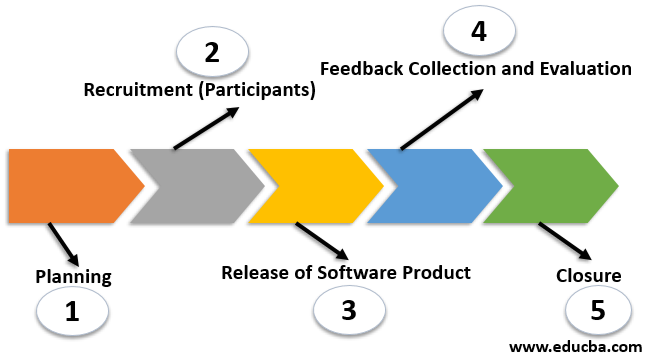Updated March 18, 2023
Introduction to Beta Testing
Beta testing is one of the type of acceptance testing used to evaluate the software or product requirements with the customer requirements. In other words, we can say that it checks whether the software or product meets the users’ requirements or not. Beta testing is done after the alpha testing but before the release of the product or software in the market; as it is done at the user side, finding right the participants who test the product can be challenging.
Why Do We Need Beta Testing?
Below given are some of the reasons why it is important for any application:
- It gives the right feedback on the actual customer experience after using the application by the end-users (beta testers).
- As there are many beta testers for testing a software application, every user has their own way of testing. Though there are no specific test plan and test cases that needs to be executed, it increases the probability of finding more and more bugs in the application from different perspectives before release.
- Hidden bugs can be easily uncovered while testing the real environment application instead of a test/lab environment.
- With the wide range of OS devices with different configurations, several issues are found which could cause problems for real customers on their specific devices.
- Known/Neglected issues by the QA team and developers are highlighted if they matter or make it uncomfortable to end-users using the application.
How does Beta Testing Work?
Being a tester, it is very important to understand how it is performed in the real environment before the actual release of the software products.
Step 1: Planning
Planning is the first and foremost step before the start of anything in the IT world. Proper planning is required to define testing goals with all the details like test management, number of participants involved in testing, time for the testing of an application, other important details regarding the application, etc.
Step 2: Recruitment (Participants)
Choosing the right people for beta testing is a very important phase. The number of participants involved in the testing varies from application to application and from the project budget. Normally a company hires a range of 50-100 beta testers with varying domains to test the application according to their perspective and help find different hidden bugs.
Step 3: Release of Software Product
The software which needs to be tested is released to the beta testers to proceed for testing. Generally, a link is sent to the participants from where they can download the application or open it in the browser. User manuals and other software documents are sent to the testers to understand the application better. Bug logging templates are also shared with the testers to maintain consistency in all the logged bugs by different testers.
Step 4: Feedback Collection and Evaluation
Defects raised during the beta testing are reported to the development team for further evaluation and fixing, which are then tested for the QA team before the patch. Feedbacks are collected from the beta testers to improve the app according to the end-user viewpoint. Suggestions by the beta testers are collected for improvement in future releases.
Step 5: Closure
It comes to closure once all the features are working fine, fixed bugs are patched, and the application is good to release in the market for end-users. Decided Incentives and rewards are distributed to the beta testers, and formal closure of the testing is done from both sides keeping good relations for the future.
Advantages and Disadvantages of Beta Testing
Given below are the advantages and disadvantages mentioned:
Advantages:
- It helps in analyzing customer feedback before the release of the product.
- It helps in improving the overall quality of the software as more bugs can be discovered because of different test environments, OS, testing patterns of testers.
- It helps in reducing the risk of software failure by understanding the end-user point of view regarding the product and fixing it accordingly.
- Testers or developers neglected issues that matter to real customers that are uncovered in beta testing.
- One of the biggest advantages is that it helps in finding the actual status of software (whether it is ready for release or not) before release.
Disadvantages:
- It could be proven a failure in case of poor test management as it is performed outside the office premises, and keeping track of every tester of their performance and timely response is one of the most difficult tasks.
- It seems to be useless and a waste of time if the unstable/ under development product is released to the testing team.
- Receiving feedback from the end-users and understanding their different points of view is very important. If no proper feedback is received and no improvements are done accordingly, it would be useless.
- Sometimes, it takes a lot of time which may cause a delay in the release of software and hence affects the project deadlines.
- Finding the right beta users with a good knowledge of how to use the product and its features is challenging.
Conclusion
The above description clearly explains what beta testing and its importance in the IT world is. In the end, customer satisfaction is what matters, and beta testing helps in gathering customer feedback before releasing the product in the real market. There is no use of releasing the product early if the customer does not like it in order to fill that gap between testing in a restricted environment (with the developers and testers of the same software) and testing in a real environment without any restrictions (with the end uses not involved before in that software) beta testing serves as a bridge.
Recommended Articles
This is a guide to Beta Testing. Here we discuss what is beta testing along with the advantages and disadvantages. You can also go through our other suggested articles to learn more –




